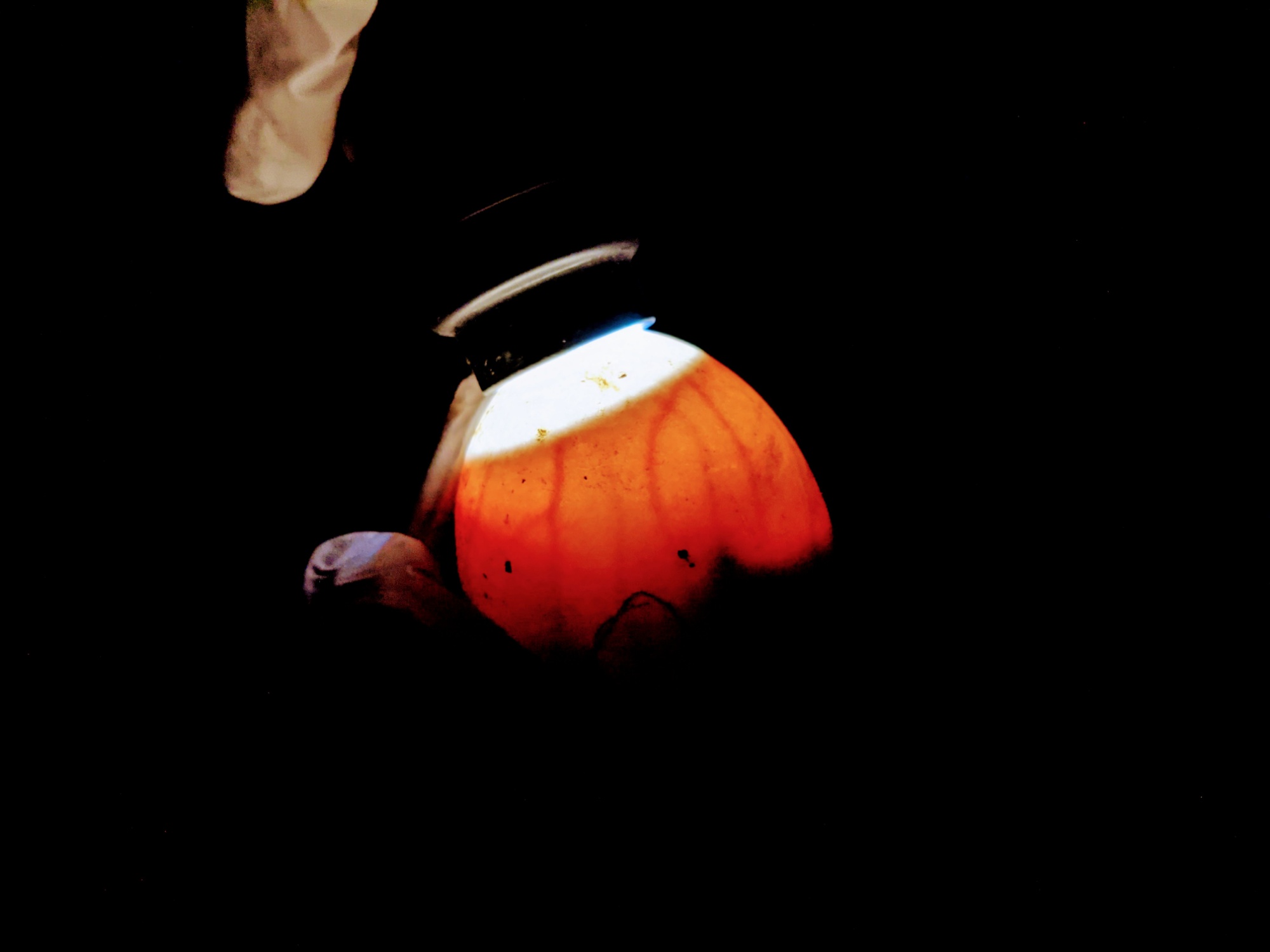
The goose eggs are nearly three quarters of the way through incubation. Today, I candled to verify continued development and weighed the eggs. I also visually checked the air cell development.
Of the 11 remaining eggs, 10 are looking good: very dark and full of embryo, with thick, ropy veining. The eggs are so full at this point that they appear almost completely dark. That’s what I wanted to see, but it also means a photo of the lower part of the egg isn’t going to happen.
The air cells looked a bit small in several of the eggs, so I’ll be running the incubators pretty dry – around 20% humidity – for the next week to try to help the air cells increase in preparation for hatching. I also don’t increase humidity during lockdown until I see an external pip, so between the lower humidity and continued misting and cooling, the air cells should grow larger.
Sadly, candling revealed that another egg quit since the last candling. Judging by the size of the embryonic mass (a black shadow surrounded by fluid, no active veins visible, very different from the other eggs), I’d guess it occurred fairly soon after the second candling. Again, Nature happens….I guess this gosling just wasn’t meant to join the gaggle.
Losing a developing gosling this late in incubation is a blow, but the risk of death is ever present; even after a gosling has pipped and is breathing air, ready to hatch, sometimes they just don’t. Accepting that not every gosling (or chick, duckling, keet) will successfully hatch is necessary to continue incubating eggs, which is one of the reasons why I describe the experience as bittersweet. The emergence of live hatchlings makes the difficult parts worthwhile, though.
I’ll be fervently hoping that the remaining 10 eggs make it to the finish line. Wish us luck!

Comments are closed.